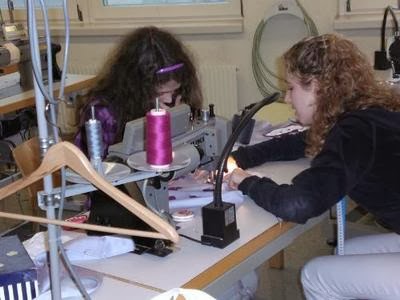Introduction:
Principles of quality control in textile industry refer to the various concepts that make up a textile factory’s quality assurance program. Quality assurance programs provide managers and staff with the philosophy, structure and strategies necessary to improve service and product delivery. Many businesses follow established concepts as outlined by quality organizations, such as Six Sigma, Total Quality Management or International Organization for Standardization.
Principles of Quality Control:
The essential requirements for producing a reliable product has been stated as follows:
The Role of Quality Control:
In a total quality control scheme, the total involvement of all personnel is required as a philosophy.
 |
| Textile Quality Control |
The essential requirements for producing a reliable product has been stated as follows:
- A satisfactory design of product, thoroughly proved by adequate development testing in order to establish its reliability under the conditions to which it will be subjected in use. This is the Requisite Quality of the product.
- A full specification of the requirements of this quality, which must be clearly understood by everyone concerned with the production of the constituent parts and of the complete end product.
- Confirmation that the manufacturing processes are capable of meeting these requirements.
- Full acceptance, by all those concerned with production, of the responsibility for meeting the standards set by the specification.
- Checks on the product at every stage of manufacture to detect any departures from the specification.
- Record essential information derived from these checks to provide accurate evidence for action.
- Establishment of lines of communication, - i.e. Feedback to Production, - to ensure that this action is taken to effect the appropriate adjustments to materials, process and operatives to maintain future production within the specification.
The Role of Quality Control:
In a total quality control scheme, the total involvement of all personnel is required as a philosophy.
- The staff concerned in all duties must be given authority to carry out their functions. These functions should be defined.
- Lines of communication and responsibility should be established to carry out an effective policy. Horizontal communication at all levels of personnel between Quality Control, Production and other departments is needed. Also there must be vertical lines, which follow the lines of responsibility and authority. In order to achieve this aim, the terms of reference under which staff work, must be established. This is, perhaps, best accomplished by job descriptions.
- It is the job of Quality Control to establish the correct information concerning a quality situation, and present this clearly to their colleagues.
- Persons outside Quality Control must be authorised to make the commercial decisions involved from a pre-established series of options, the consequences of each being fully understood.
- Payment schemes should be re-examined where necessary to reward quality as well as production, in a balanced way, since both are commercially important.














No Responses to "Principles of Textile Quality Control | The Role of Quality Control"